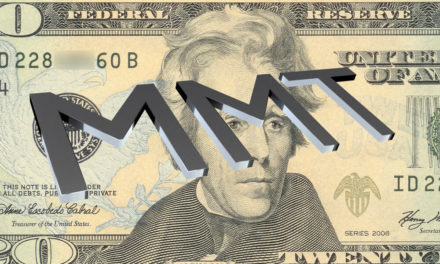The economy is slowing down and that’s a fact.
Fourth-quarter GDP numbers just released showed 2.6 percent growth, in part due to the record-long 35-day government shutdown. The number dipped from 3.4 percent during the July-September quarter, which was down from a red-hot 4.2 percent pace during the April-June quarter.
Pundits are warning we could enter a recession later this year or next. But according to The Economic Collapse and its numbers, a recession could hit sooner than virtually anyone aside from David Stockman believes.
Here are 18 numbers that prove we are heading into a recession, per The Economic Collapse:
#1 Farm loan delinquencies just hit the highest level that we have seen in 9 years.
#2 We just learned that U.S. exports declined by 4 billion dollars during the month of December.
#3 J.C. Penney just announced that they will be closing another 24 stores.
#4 Victoria’s Secret has just announced plans to close 53 stores.
#5 On Thursday, Gap announced that it will be closing 230 stores over the next two years.
#6 Payless ShoeSource has declared bankruptcy and is closing all 2,100 stores.
#7 Tesla is also closing all of their physical sales locations and will now only sell vehicles online.
#8 PepsiCo has started laying off workers and has committed to “millions of dollars in severance pay”.
#9 The Baltic Dry Index has dropped to the lowest level in more than two years.
#10 This is the worst slump for core U.S. factory orders in three years.
#11 We just witnessed the largest decline in the Philly Fed Business Index in more than 7 years.
#12 In January, sales of existing homes fell 8.9 percent from a year earlier. That was the third month in a row that we have seen a decline of at least 8 percent. This is an absolutely catastrophic trend for the real estate industry.
#13 U.S. housing starts were down 11.2 percent in December compared to the previous month.
#14 Compared to a year earlier, home sales in southern California were down 17 percent in January.
#15 In December, home sales in Sacramento County fell a whopping 22.5 percentcompared to a year earlier.
#16 Pending home sales in the United States have now fallen on a year over year basis for 13 months in a row.
#17 More than 166 billion dollars in student loan debt is now “seriously delinquent”. That is an all-time record.
#18 More than 7 million Americans are behind on their auto loan payments. That is also a new all-time record, and it is far higher than anything that we witnessed during the last recession.
It appears that “the recovery” has finally come to an end. After seeing all of those numbers, there is no way that anyone can possibly claim that economic conditions are “getting better”.
And even though the official government numbers are highly manipulated, we never even had one “boom year” throughout the entire “recovery”.
The final numbers for 2018 are now in, and last year was the 13th year in a rowwhen U.S. GDP growth was below 3 percent.
The last time we had a “boom year” when economic growth was above 3 percent was all the way back in 2005. That was in the middle of the Bush administration.
We have never seen a bad streak like this before in modern American history. The following comes from CNS News…
But prior to the current 13-year period when real GDP has failed to grow by 3.0 percent in any year, there has been no stretch (in the years since 1930) when the United States went as long as five straight years with real GDP failing to grow by at least 3 percent.
Even though the Federal Reserve pumped trillions of dollars into the financial system over the last decade, and even though we added nearly $12 trillion dollars to the national debt, the best that the authorities have been able to do is to stabilize the system for a while. Now it is starting to sputter once again, and many believe that the next crisis will be far worse than the last one.
By contrast, the Great Depression of the 1930s featured some really bad years, but following those bad years the U.S. experienced a tremendous economic boom…
By contrast, after the stock market crash in 1929, the United States saw four years of negative annual GDP—1930 (-8.5), 1931 (-6.4), 1932 (-12.9) and 1933 (-1.2). But then in the nine full years from 1934 through 1942, real GDP grew by an average of 9.75 percent.
We should have had some boom years too, but we didn’t, and now things are going to get bad again.
The Democrats are going to blame the Republicans and the Republicans are going to blame the Democrats, but all of that arguing isn’t going to solve anything.
What is coming next has been a central focus of my work for a very long time. The last recession was very painful, but it did not fundamentally alter life in America.
This next crisis will.
The “Everything Bubble” is bursting, the “Perfect Storm” is coming, and all of our lives will never be the same again.
But that doesn’t mean that there isn’t hope. In fact, once things really start getting crazy hope is going to be one of the major themes in my work because people are really going to need it.
There will be great challenges, and life will be very different, but that doesn’t mean that life is over.
America is about to experience the consequences of decades of exceedingly foolish decisions, and the pain will be extreme. But difficult times also offer an opportunity for dramatic change, and that is something that we will need to embrace.




